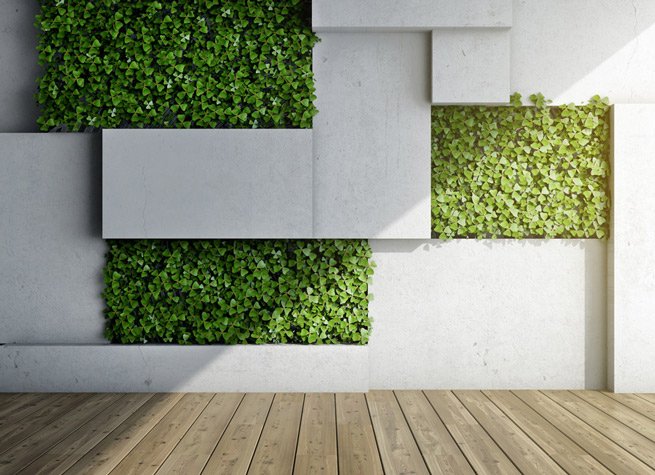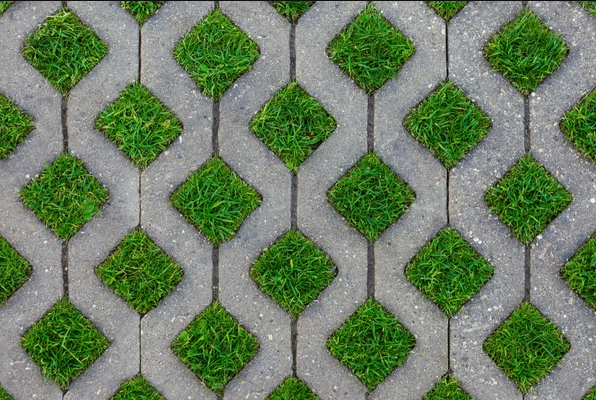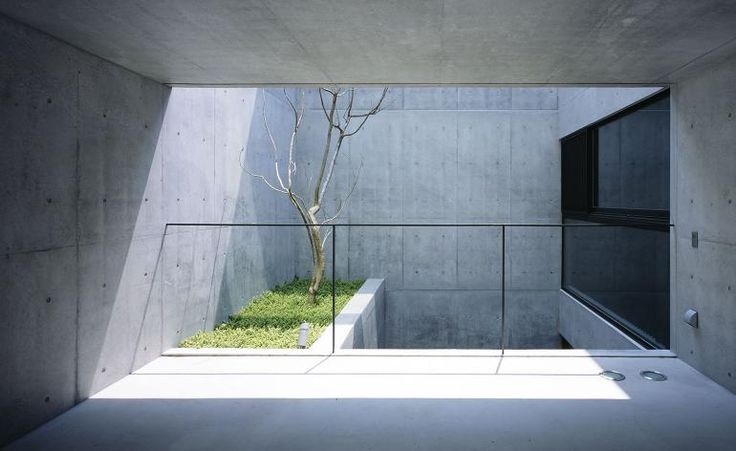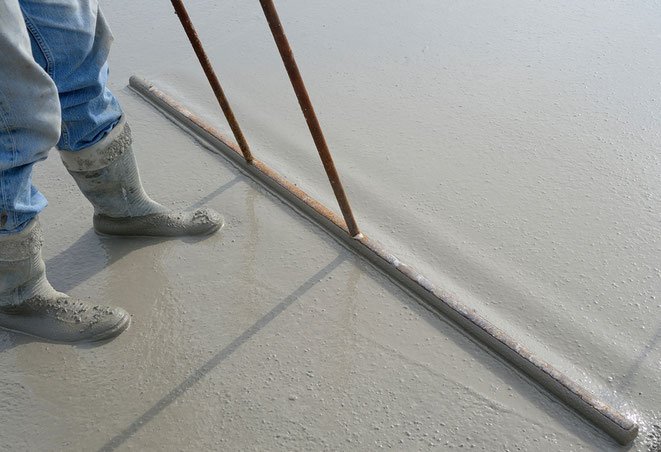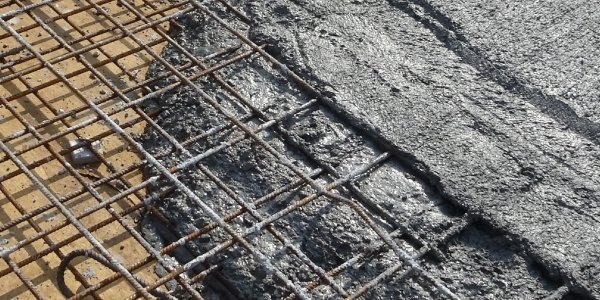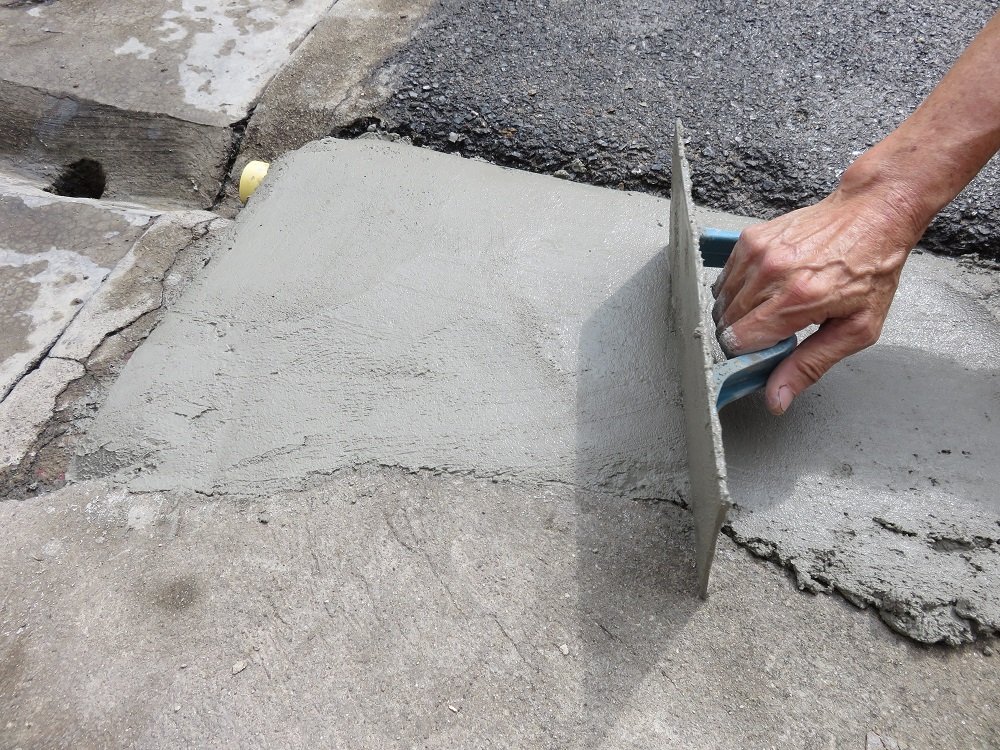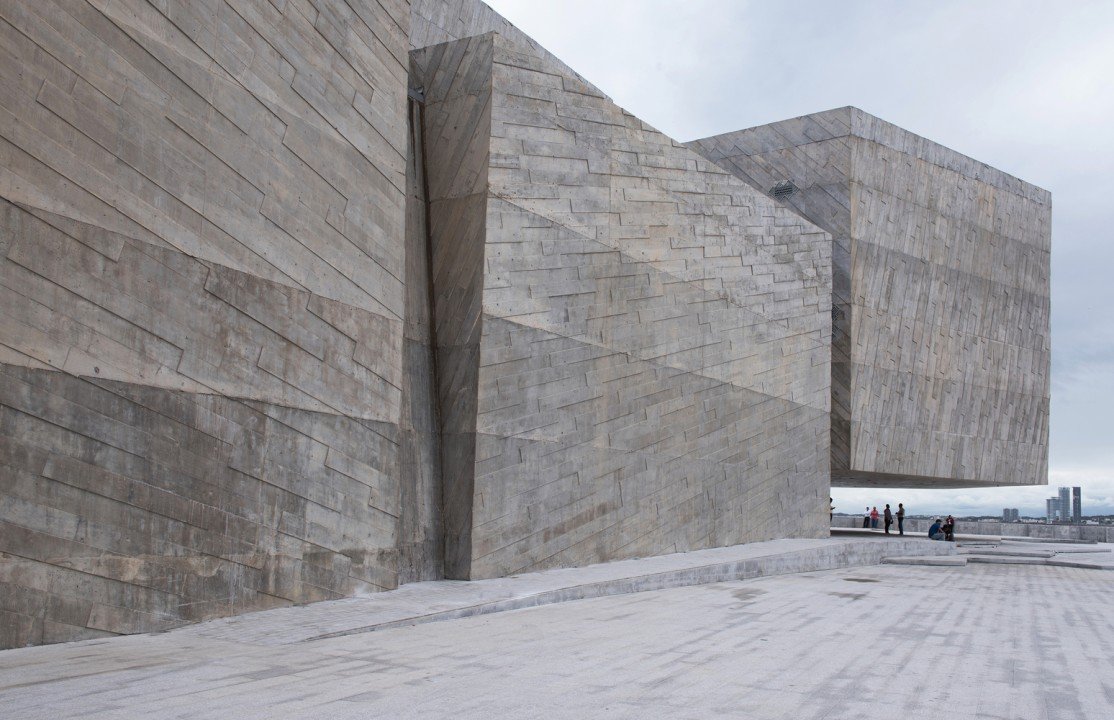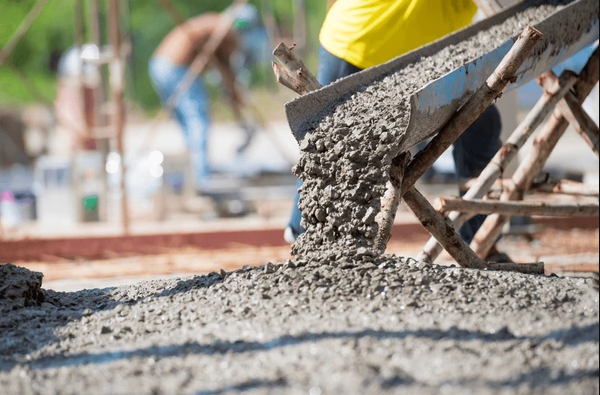Designing Concrete Vertical Gardens: Merging Nature with Urban Architecture Concrete vertical gardens are an innovative way to integrate nature into the urban environment, utilizing vertical space to create green oases amidst the concrete jungle. In this article, we will explore how to design and construct concrete vertical gardens to merge nature with urban architecture. Selection of Suitable Plants The first step in designing a concrete vertical garden is to select plants suitable for the environment. Choose plants that are resilient, low-maintenance, and capable of growing in vertical conditions, such as ferns, succulents, and climbing plants. Space Design and Planning Before construction begins, it’s important to design and plan the vertical garden space. This includes determining the location, size, and layout of the concrete structures, as well as the distribution of plants to create a visually appealing and functional design. Construction of Concrete Structure Once the design is complete, the construction of the concrete structure can proceed. This may involve installing prefabricated concrete panels or creating concrete structures on-site, depending on the project’s needs and preferences. Substrate Preparation and Planting After completing the concrete structure, prepare the substrate for planting. Use a lightweight, well-draining substrate, ideally designed specifically for vertical gardens. Once the substrate is prepared, plants can be planted according to the previously established design. Automated Irrigation System Concrete vertical gardens require an appropriate irrigation system to ensure that plants receive the right amount of water. Automated irrigation systems can be installed to distribute water evenly and efficiently along the vertical structure. Regular Maintenance To ensure the health and growth of plants, regular maintenance of the vertical garden is important. This may include pruning plants, controlling pests and diseases, and fertilizing as needed to promote healthy growth. Environmental and Aesthetic Benefits Concrete vertical gardens not only provide environmental benefits by improving air quality and reducing pollution but also add beauty and vitality to urban spaces. Their presence can enhance the emotional and mental well-being of city residents and visitors. Conclusion: Concrete vertical gardens offer an innovative and sustainable way to integrate nature into densely populated urban environments. By merging architecture with vegetation, these gardens create green spaces that are not only aesthetically pleasing but also beneficial for the environment and the quality of life of those who enjoy them. Recents post concrete work sustainable Green Concrete Construction: Reducing the Environmental Impact of Your Projects #2 However, the quest for innovation in concrete infrastructure has taken center stage, bridging the gap between traditional methods and groundbreaking… Read More Green Concrete Construction: Reducing the Environmental Impact of Your Projects However, the quest for innovation in concrete infrastructure has taken center stage, bridging the gap between traditional methods and groundbreaking… Read More How to Incorporate Concrete Elements into a Minimalist Design: Practical Tips However, the quest for innovation in concrete infrastructure has taken center stage, bridging the gap between traditional methods and groundbreaking… Read More Benefits of Self-Leveling Concrete: Facilitating Installation on Uneven Surfaces However, the quest for innovation in concrete infrastructure has taken center stage, bridging the gap between traditional methods and groundbreaking… Read More How to Choose the Right Type of Concrete for Your Project: A Complete Guide However, the quest for innovation in concrete infrastructure has taken center stage, bridging the gap between traditional methods and groundbreaking… Read More 7 Keys for Effective Concrete Maintenance at Home However, the quest for innovation in concrete infrastructure has taken center stage, bridging the gap between traditional methods and groundbreaking… Read More Load More End of Content.
Green Concrete Construction: Reducing the Environmental Impact of Your Projects
Green Concrete Construction: Reducing the Environmental Impact of Your Projects In an increasingly environmentally conscious world, sustainable construction has become a priority for many projects. Green concrete, a more eco-friendly alternative to conventional concrete, is gaining popularity due to its environmental benefits. In this article, we will explore how construction with green concrete can help reduce the environmental impact of your construction projects. Sustainable Materials Green concrete is produced using sustainable materials such as recycled aggregates, fly ash, and blast furnace slag. These materials help reduce the demand for natural resources and minimize the environmental impact associated with the extraction and processing of raw materials. Carbon Emissions Reduction The production of conventional concrete is one of the major sources of carbon emissions in the construction industry. Green concrete uses more efficient production techniques and lower environmental impact materials, helping to reduce carbon emissions associated with construction. Increased Durability and Longevity Green concrete tends to be more durable and resilient than conventional concrete, meaning it requires less maintenance and repairs over its lifespan. This reduces the amount of materials and energy needed to maintain and replace concrete structures, contributing to more sustainable construction. Improvement of Energy Efficiency Green concrete can help improve the energy efficiency of buildings by providing greater thermal mass and thermal stability. This helps regulate indoor temperatures, reducing the need for heating and cooling and, in turn, energy consumption. Waste Management and Recycling During construction with green concrete, waste management and recycling practices can be implemented to further reduce environmental impact. Concrete waste can be crushed and recycled as aggregates for new concrete batches, minimizing the amount of waste sent to landfills. Certifications and Regulations There are several certifications and regulations that promote and support construction with green concrete, such as LEED (Leadership in Energy and Environmental Design) and the eco-friendly materials rating system. Compliance with these regulations can help projects gain recognition and reputation for their commitment to sustainability. Education and Awareness Finally, construction with green concrete also involves educating and raising awareness among all parties involved in the project, from architects and engineers to contractors and owners. Promoting a culture of sustainable construction can inspire positive changes throughout the construction industry. Conclusion: Construction with green concrete offers a number of significant benefits for the environment and society as a whole. By adopting more sustainable construction practices and using lower environmental impact materials, we can reduce the negative impact of construction on the environment and work towards a more sustainable and planet-friendly future. Recents post concrete work sustainable How to Incorporate Concrete Elements into a Minimalist Design: Practical Tips #2 However, the quest for innovation in concrete infrastructure has taken center stage, bridging the gap between traditional methods and groundbreaking… Read More How to Incorporate Concrete Elements into a Minimalist Design: Practical Tips However, the quest for innovation in concrete infrastructure has taken center stage, bridging the gap between traditional methods and groundbreaking… Read More Benefits of Self-Leveling Concrete: Facilitating Installation on Uneven Surfaces However, the quest for innovation in concrete infrastructure has taken center stage, bridging the gap between traditional methods and groundbreaking… Read More How to Choose the Right Type of Concrete for Your Project: A Complete Guide However, the quest for innovation in concrete infrastructure has taken center stage, bridging the gap between traditional methods and groundbreaking… Read More 7 Keys for Effective Concrete Maintenance at Home However, the quest for innovation in concrete infrastructure has taken center stage, bridging the gap between traditional methods and groundbreaking… Read More Concrete in the Kitchen: Simple Steps to Create a Durable and Stylish Countertop However, the quest for innovation in concrete infrastructure has taken center stage, bridging the gap between traditional methods and groundbreaking… Read More Load More End of Content.
How to Incorporate Concrete Elements into a Minimalist Design: Practical Tips
How to Incorporate Concrete Elements into a Minimalist Design: Practical Tips Minimalist design is a popular trend in architecture and interior design characterized by simplicity, cleanliness, and functionality. Concrete, with its industrial aesthetic and versatility, lends itself perfectly to this style. In this article, we will explore how you can incorporate concrete elements into a minimalist design with some practical tips. Finish Selection When incorporating concrete into a minimalist design, it’s important to choose finishes that complement the clean and simple aesthetic of the style. Opt for smooth and polished surfaces that reflect light and create a sense of spaciousness in the space. Clean Lines Design Minimalist design relies on clean lines and simple shapes. When incorporating concrete elements, look for pieces with simple geometric shapes and straight lines that seamlessly integrate into the overall design of the space. Strategic Use of Color While concrete is known for its neutral gray tone, you can strategically play with color to add visual interest to the space. Consider adding pigments or dyes to the concrete to create subtle tones that complement the color palette of the minimalist design. Natural Textures Concrete can offer a variety of textures, from smooth surfaces to rough or textured finishes. Experiment with different textures to add depth and dimension to the design without compromising the simplicity of the minimalist style. Integration of Functional Elements In a minimalist design, each element should have a specific function and contribute to the overall functionality of the space. When incorporating concrete elements, ensure that they also serve a practical function, such as built-in shelves, integrated benches, or kitchen countertops. Proper Lighting Lighting plays a crucial role in minimalist design as it can highlight key elements and create cozy atmospheres. Consider using recessed lighting or pendant fixtures to highlight concrete elements and create interesting visual effects in the space. Maintenance and Care Finally, it’s important to consider the maintenance and care of concrete elements in a minimalist design. Ensure that concrete surfaces are properly sealed and protected to prevent stains and damage, and follow a regular cleaning and maintenance regimen to keep the design looking impeccable. Conclusion: Incorporating concrete elements into a minimalist design can add a touch of modernity and sophistication to the space while maintaining the characteristic simplicity and functionality of the style. With these practical tips, you can create a minimalist and elegant environment that highlights the beauty and versatility of concrete in interior design. Recents post concrete work sustainable Benefits of Self-Leveling Concrete: Facilitating Installation on Uneven Surfaces #2 However, the quest for innovation in concrete infrastructure has taken center stage, bridging the gap between traditional methods and groundbreaking… Read More Benefits of Self-Leveling Concrete: Facilitating Installation on Uneven Surfaces However, the quest for innovation in concrete infrastructure has taken center stage, bridging the gap between traditional methods and groundbreaking… Read More How to Choose the Right Type of Concrete for Your Project: A Complete Guide However, the quest for innovation in concrete infrastructure has taken center stage, bridging the gap between traditional methods and groundbreaking… Read More 7 Keys for Effective Concrete Maintenance at Home However, the quest for innovation in concrete infrastructure has taken center stage, bridging the gap between traditional methods and groundbreaking… Read More Concrete in the Kitchen: Simple Steps to Create a Durable and Stylish Countertop However, the quest for innovation in concrete infrastructure has taken center stage, bridging the gap between traditional methods and groundbreaking… Read More Lighting up with Concrete: Strategies to Harness Natural Light Indoors However, the quest for innovation in concrete infrastructure has taken center stage, bridging the gap between traditional methods and groundbreaking… Read More Load More End of Content.
Benefits of Self-Leveling Concrete: Facilitating Installation on Uneven Surfaces
Benefits of Self-Leveling Concrete: Facilitating Installation on Uneven Surfaces Self-leveling concrete is a popular choice in construction due to its ability to automatically level itself and provide a flat and uniform surface. In this article, we will explore the numerous benefits of using self-leveling concrete in construction projects, especially on uneven surfaces. Automatic Leveling One of the main advantages of self-leveling concrete is its ability to automatically level itself. This eliminates the need for manually leveling the surface, saving time and labor during installation. Improved Flatness Self-leveling concrete provides an extremely flat and uniform surface, which is ideal for applications requiring a solid and leveled base. This ensures even distribution of loads and an aesthetically pleasing appearance. Ease of Installation Compared to other types of concrete, self-leveling concrete is easier to install. It is simply poured onto the surface and spread evenly, eliminating the need for specialized tools or complicated techniques. Waste Reduction Due to its ability to level and spread evenly, self-leveling concrete helps reduce waste during installation. This can result in significant savings in material and labor costs. Application Versatility Self-leveling concrete can be used in a wide variety of applications, including commercial and industrial floors, exterior pavements, and repairs of uneven surfaces. Its versatility makes it ideal for a variety of construction projects. Quick Curing Time Self-leveling concrete generally has faster curing times compared to other types of concrete. This means that treated areas can be made available for use more quickly, speeding up the construction process. Improved Finishing Quality Due to its ability to level itself and provide a smooth and uniform surface, self-leveling concrete improves the quality of the final finish. This results in a more attractive and professional appearance for the project. Conclusion: Self-leveling concrete offers a number of significant benefits that make it an attractive option for a variety of construction projects. Its ability to automatically level itself, improve flatness, facilitate installation, and offer quick curing times make it ideal for uneven surfaces and other applications where a solid and uniform base is required. Recents post concrete work sustainable How to Choose the Right Type of Concrete for Your Project: A Complete Guide #2 However, the quest for innovation in concrete infrastructure has taken center stage, bridging the gap between traditional methods and groundbreaking… Read More How to Choose the Right Type of Concrete for Your Project: A Complete Guide However, the quest for innovation in concrete infrastructure has taken center stage, bridging the gap between traditional methods and groundbreaking… Read More 7 Keys for Effective Concrete Maintenance at Home However, the quest for innovation in concrete infrastructure has taken center stage, bridging the gap between traditional methods and groundbreaking… Read More Concrete in the Kitchen: Simple Steps to Create a Durable and Stylish Countertop However, the quest for innovation in concrete infrastructure has taken center stage, bridging the gap between traditional methods and groundbreaking… Read More Lighting up with Concrete: Strategies to Harness Natural Light Indoors However, the quest for innovation in concrete infrastructure has taken center stage, bridging the gap between traditional methods and groundbreaking… Read More Building Comfort: Tips for Integrating Concrete in a Cozy Home However, the quest for innovation in concrete infrastructure has taken center stage, bridging the gap between traditional methods and groundbreaking… Read More Load More End of Content.
How to Choose the Right Type of Concrete for Your Project: A Complete Guide
How to Choose the Right Type of Concrete for Your Project: A Complete Guide Selecting the appropriate type of concrete is crucial for the success of any construction or renovation project. With a wide variety of options available, from ready-mix concrete to self-leveling concrete, it can be overwhelming to choose the most suitable one. In this complete guide, we will explore the key factors to consider when choosing the type of concrete for your project. Understanding Your Needs The first step in choosing the right type of concrete is understanding the specific needs of your project. Will it be used indoors or outdoors? Is additional strength required? What kind of finish are you looking for? These questions will help determine which features are most important to you. Project Type The type of project you are undertaking will influence the type of concrete you need. For example, a paving project will require different concrete than that used in constructing a slab for a garage. It’s important to select concrete that suits the specific demands of your project. Strength and Durability The strength and durability of the concrete are crucial factors to consider, especially if it will be used in heavy-duty applications or outdoor environments. Refer to manufacturer specifications to determine the compressive strength and durability of the concrete you are considering. Manageability and Workability The ease of handling and workability of the concrete are also important, especially if you are doing the work yourself or hiring a construction team. Choose concrete that is easy to mix, pour, and manipulate to ensure a smooth construction process. Finish and Appearance The finish and appearance of the concrete are important aesthetic aspects to consider, especially if it will be used indoors or in visible areas. There are a variety of options available, from polished concrete to stamped concrete, each with its own unique look. Environmental Considerations It’s also important to consider the environmental impact of the concrete you are using. Look for options that are environmentally friendly and minimize the use of natural resources and greenhouse gas emissions during production. Consultation with a Professional If you are dealing with a complex project or are unsure which type of concrete is best for your needs, don’t hesitate to consult with a construction professional. They can provide expert guidance and personalized recommendations for your specific project. Conclusion: Choosing the right type of concrete is essential for the success of any construction or renovation project. By carefully considering your needs, project type, strength and durability, manageability and workability, finish and appearance, environmental considerations, and consulting with a professional, you can make an informed decision that ensures optimal results for your project. Recents post concrete work sustainable 7 Keys for Effective Concrete Maintenance at Home #2 However, the quest for innovation in concrete infrastructure has taken center stage, bridging the gap between traditional methods and groundbreaking… Read More 7 Keys for Effective Concrete Maintenance at Home However, the quest for innovation in concrete infrastructure has taken center stage, bridging the gap between traditional methods and groundbreaking… Read More Concrete in the Kitchen: Simple Steps to Create a Durable and Stylish Countertop However, the quest for innovation in concrete infrastructure has taken center stage, bridging the gap between traditional methods and groundbreaking… Read More Lighting up with Concrete: Strategies to Harness Natural Light Indoors However, the quest for innovation in concrete infrastructure has taken center stage, bridging the gap between traditional methods and groundbreaking… Read More Building Comfort: Tips for Integrating Concrete in a Cozy Home However, the quest for innovation in concrete infrastructure has taken center stage, bridging the gap between traditional methods and groundbreaking… Read More Concrete in the Garden: Creative Ideas to Beautify Your Outdoor Space However, the quest for innovation in concrete infrastructure has taken center stage, bridging the gap between traditional methods and groundbreaking… Read More Load More End of Content.
7 Keys for Effective Concrete Maintenance at Home
7 Keys for Effective Concrete Maintenance at Home Concrete is a durable and versatile material used in a variety of home applications, from pavements to structures. However, to ensure its longevity and maintain its aesthetic appearance, it’s crucial to perform proper maintenance. In this article, we’ll explore seven important keys for effective concrete maintenance at home. Regular Inspection:The first key to effective concrete maintenance is conducting regular inspections. This involves visually checking the condition of the concrete for cracks, stains, or other signs of deterioration. Periodic inspections can help identify problems early and take preventive measures. Deep Cleaning:Deep cleaning is essential to keep concrete in good condition. Different cleaning methods such as pressure washing or specific concrete cleaners can be used to remove dirt, stains, and residue buildup. Regular Sealing:Sealing concrete is an important measure to protect it against moisture, chemicals, and other elements that may damage it. Applying a high-quality concrete sealer regularly can help prolong its lifespan and maintain its original appearance. Timely Crack Repair:Cracks in concrete can worsen over time if not properly addressed. It’s crucial to repair them as soon as they’re detected to prevent further damage. Depending on the size and severity of the cracks, they may require different repair methods such as crack fillers or concrete patches. Weather Protection:Concrete can be affected by weather conditions, especially rain, snow, and sun exposure. To protect it against these elements, protective coatings can be applied or appropriate waterproofing methods can be used. Expansion Joint Maintenance:Expansion joints are important to allow for the expansion and contraction of concrete due to changes in temperature and humidity. It’s crucial to maintain these joints in good condition by filling or sealing them as needed to prevent crack formation. Professional Consultation:In some cases, consulting a professional may be necessary for proper concrete maintenance at home. Concrete experts can offer specific recommendations and customized solutions to keep concrete in optimal condition. Conclusion: Effective concrete maintenance at home is essential to ensure its durability and functionality over time. By following these seven keys, homeowners can protect their concrete surfaces and keep them in excellent condition for many years. Recents post concrete work sustainable Concrete in the Kitchen: Simple Steps to Create a Durable and Stylish Countertop #2 However, the quest for innovation in concrete infrastructure has taken center stage, bridging the gap between traditional methods and groundbreaking… Read More Concrete in the Kitchen: Simple Steps to Create a Durable and Stylish Countertop However, the quest for innovation in concrete infrastructure has taken center stage, bridging the gap between traditional methods and groundbreaking… Read More Lighting up with Concrete: Strategies to Harness Natural Light Indoors However, the quest for innovation in concrete infrastructure has taken center stage, bridging the gap between traditional methods and groundbreaking… Read More Building Comfort: Tips for Integrating Concrete in a Cozy Home However, the quest for innovation in concrete infrastructure has taken center stage, bridging the gap between traditional methods and groundbreaking… Read More Concrete in the Garden: Creative Ideas to Beautify Your Outdoor Space However, the quest for innovation in concrete infrastructure has taken center stage, bridging the gap between traditional methods and groundbreaking… Read More DIY with Concrete: Creative Projects to Beautify Your Home on a Budget However, the quest for innovation in concrete infrastructure has taken center stage, bridging the gap between traditional methods and groundbreaking… Read More Load More End of Content.
Concrete Elegance: Aesthetic Approaches to Architectural Design
Concrete Elegance: Aesthetic Approaches to Architectural Design In the realm of architectural design, concrete often conjures images of strength and durability. However, the marriage of concrete and elegance is a symphony that goes beyond mere functionality. Join us on a journey through the realm of architectural design as we explore the ways in which concrete transforms into a medium of aesthetic brilliance. Redefining Concrete’s Image in Design Concrete, often associated with industrial and utilitarian aesthetics, has undergone a metamorphosis in the world of architecture. Today, it stands as a versatile canvas for architects and designers to express creativity and redefine perceptions. The Aesthetic Approaches to Concrete Design Textured Finishes: Introducing textures to concrete surfaces adds depth and visual interest. From exposed aggregates to intricate patterns, textured finishes elevate the tactile and visual experience of concrete structures. Form and Function Integration: Architectural design that seamlessly integrates form and function creates visually striking structures. Concrete, with its malleability, allows for the creation of fluid and aesthetically pleasing shapes that serve both practical and artistic purposes. Incorporating Colors: The days of grey monotony are long gone. Concrete now comes in an array of colors, offering architects a palette to play with. Colored concrete allows for the creation of vibrant, expressive, and visually captivating architectural elements. Architectural Concrete Elements: From decorative facades to sculptural elements, architectural concrete features contribute to the overall elegance of a structure. These elements serve as focal points, enhancing the aesthetic appeal of the entire design. Light and Shadow Play: Leveraging the interplay of light and shadow on concrete surfaces adds a dynamic dimension to architectural designs. This technique accentuates the texture and details, creating visually captivating and ever-changing perspectives. Crafting Timeless Elegance with Concrete Aesthetic approaches to architectural concrete design go beyond trends; they aim for timelessness. By embracing the following principles, architects can create enduring elegance: Balance of Elements: Achieving a harmonious balance between concrete and other architectural elements ensures a cohesive and visually appealing design. Sustainability in Design: Integrating sustainable practices into concrete design not only contributes to environmental responsibility but also adds an ethical layer to the aesthetic narrative. Cultural and Contextual Integration: Drawing inspiration from cultural and contextual cues enriches concrete designs, making them resonate with their surroundings. Conclusion “Concrete Elegance” is not just a juxtaposition of words; it is a testament to the evolving nature of concrete in architectural design. As architects and designers continue to push the boundaries of creativity, concrete stands as a timeless medium that embodies both strength and grace. In the pursuit of aesthetic excellence, concrete emerges not as a constraint but as a partner in the creation of architectural masterpieces that captivate the eye and endure the test of time. Recents post concrete work sustainable Bridging the Gap: Exploring Innovations in Concrete Infrastructure However, the quest for innovation in concrete infrastructure has taken center stage, bridging the gap between traditional methods and groundbreaking… Read More Concrete Elegance: Aesthetic Approaches to Architectural Design In the realm of architectural design, concrete often conjures images of strength and durability. However, the marriage of concrete and… Read More Technology Trends in Modern Concrete Projects In the dynamic landscape of modern construction, the integration of cutting-edge technology has revolutionized the way we conceive and execute… Read More Shaping Solid Foundations in Concrete Construction In the grand tapestry of construction, the art of formwork emerges as a pivotal chapter. It is the canvas upon… Read More Concrete Reinforcement: Techniques for Safe Structures Building with concrete in extreme climates is a challenge that requires specialized knowledge and specific adaptations. Read More How to Prevent and Repair Concrete Damage Building with concrete in extreme climates is a challenge that requires specialized knowledge and specific adaptations. Read More Load More End of Content.
Technology Trends in Modern Concrete Projects
Technology Trends in Modern Concrete Projects In the dynamic landscape of modern construction, the integration of cutting-edge technology has revolutionized the way we conceive and execute concrete projects. As we embark on a journey through the ever-evolving realm of construction tech, we uncover the transformative impact of these innovations on efficiency, precision, and sustainability. The Tech Revolution in Concrete Construction Gone are the days when concrete construction relied solely on traditional methods. Today, technology plays a pivotal role in streamlining processes and optimizing outcomes. From project inception to completion, every phase benefits from the infusion of innovative solutions. Key Technology Trends Shaping Modern Concrete Projects Building Information Modeling (BIM): BIM has emerged as a game-changer in project planning and execution. This digital representation of the physical and functional characteristics of a structure facilitates collaboration among various stakeholders, enhances decision-making, and minimizes errors, ensuring a smoother project flow. Advanced Concrete Mixtures: The composition of concrete has witnessed significant advancements. Incorporating additives such as superplasticizers, fibers, and supplementary cementitious materials not only enhances performance but also contributes to sustainability and longevity. 3D Printing in Construction: The marvel of 3D printing has found its way into the construction industry. Printing intricate concrete structures with precision reduces material wastage and construction time, offering a glimpse into the future of rapid and resource-efficient building. IoT and Smart Sensors: The Internet of Things (IoT) has introduced smart sensors that monitor various aspects of concrete construction in real-time. From assessing the curing process to tracking structural health, these sensors optimize decision-making and maintenance efforts. Augmented Reality (AR) and Virtual Reality (VR): AR and VR technologies have transcended entertainment and entered the construction arena. Virtual simulations aid in project visualization, design validation, and on-site training, fostering a more immersive and efficient construction experience. Embracing Efficiency in Concrete Projects Efficiency in modern concrete projects is not solely about speed but also about precision and sustainability. Leveraging technology trends empowers construction professionals to achieve the following: Time Savings: Streamlining processes through technology reduces construction timelines, ensuring timely project delivery. Cost Efficiency: Optimal resource utilization, waste reduction, and improved decision-making contribute to cost-effectiveness in construction projects. Environmental Sustainability: Innovative technologies allow for the incorporation of eco-friendly practices, minimizing the environmental impact of concrete construction. The Future of Concrete Construction As technology continues to evolve, the future of concrete construction looks promising. From self-healing concrete to AI-driven project management, the possibilities are limitless. By staying at the forefront of these technological trends, the construction industry can not only meet but exceed the demands of the modern era. In conclusion, the efficiency unleashed by technology trends in modern concrete projects is reshaping the industry’s landscape. Embracing these innovations is not just a choice; it’s a necessity for those who seek to build not only structures but also a sustainable and technologically advanced future. Recents post concrete work sustainable Technology Trends in Modern Concrete Projects In the dynamic landscape of modern construction, the integration of cutting-edge technology has revolutionized the way we conceive and execute… Read More Shaping Solid Foundations in Concrete Construction In the grand tapestry of construction, the art of formwork emerges as a pivotal chapter. It is the canvas upon… Read More Concrete Reinforcement: Techniques for Safe Structures Building with concrete in extreme climates is a challenge that requires specialized knowledge and specific adaptations. Read More How to Prevent and Repair Concrete Damage Building with concrete in extreme climates is a challenge that requires specialized knowledge and specific adaptations. Read More Sustainable Concrete: Future and Environment Building with concrete in extreme climates is a challenge that requires specialized knowledge and specific adaptations. Read More Challenges and Solutions in Concrete Projects in Extreme Climates Building with concrete in extreme climates is a challenge that requires specialized knowledge and specific adaptations. Read More Load More End of Content.

